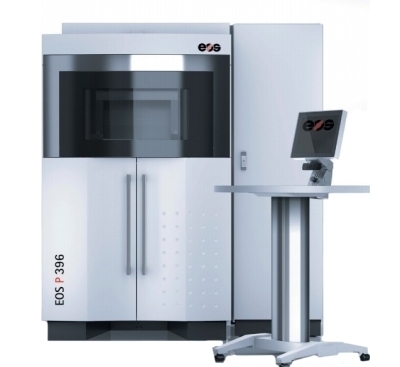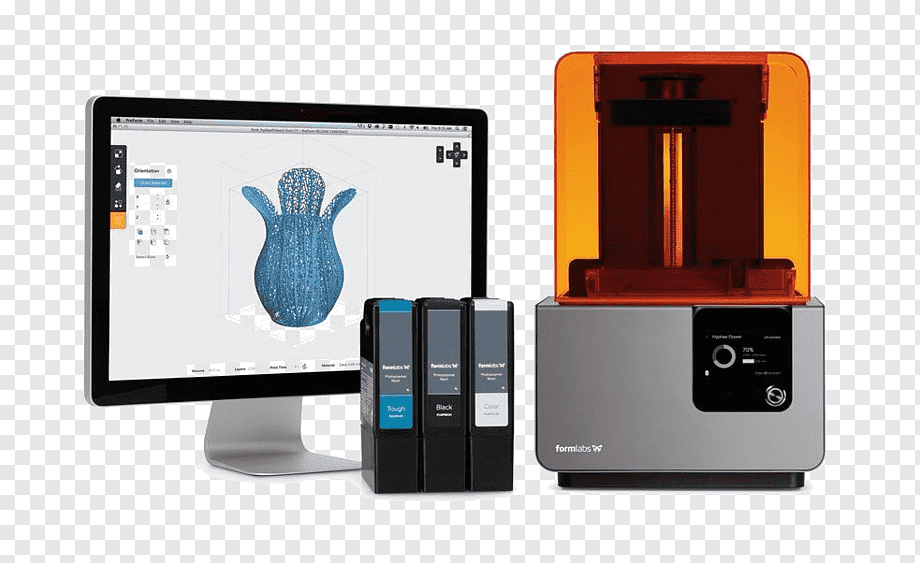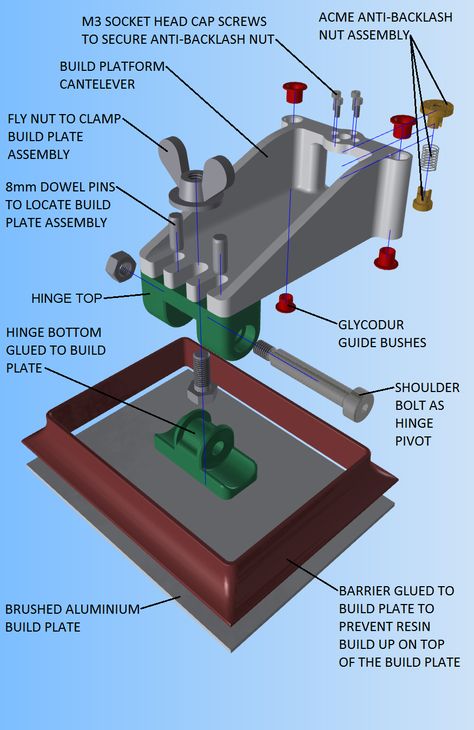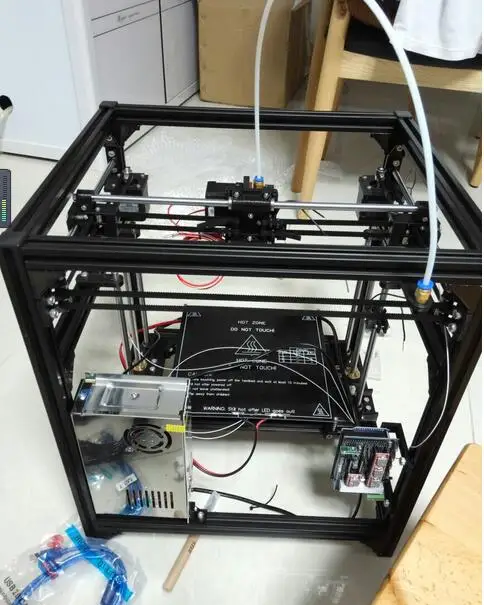Industrial 3d printer and scanner
Best industrial 3D printers | Professional 3D scanning solutions
The most commonly used industrial metal 3D printing methods are based on Selective Laser Melting (SLM). Some technologies use sintering instead, a process that’s very similar to melting except the material is pressurized and heated to a temperature that’s enough to solidify it but stops short of liquefying it. The approaches roughly correspond with the following process:
Software slices a 3D model into 2D layers that the 3D printer will use to build the final print. A special powder is spread across the surface of the 3D print bed, and a laser beam melts or sinters (depending on the technology) each layer of the 3D part.
When one layer is completed, the print bed is lowered slightly, and a recoating system spreads a new layer of powder across the base plate. The melting or sintering process with the laser beam is repeated, and the new layer adheres to the one immediately below it.
Most metal printers use a laser or electron beam to sinter or melt layers of powder into a complete 3D object.
In Electron Beam Powder Bed Fusion (EBM) printers, the process is similar, but instead of a laser beam, an electron beam is used to melt (not sinter) the powder. This is a faster process but it comes with a trade-off on accuracy.
The printing process involves melting or sintering each layer, lowering the powder bed, and repeating the process until the complete object is formed.
Selective Laser Melting (SLM) printers
EOS M400
EOS’ DMLS printers are capable of speeds of up to 7.0 m/s, and have a catalog of materials that include nickel alloys for high-temperature applications.
German manufacturer EOS has a high-end Direct Metal Laser Sintering (DMLS) printer that comes in two versions. You can get the EOS M400, which has one 1,000 Watt laser, or you can opt for the EOS M400-4, which uses four 400 Watt lasers in a system designed to enhance the melting and fusing of powder and to improve the surface finish of prints.
Both options come with a build volume of 400 × 400 × 400 mm which is sufficient for many industrial applications.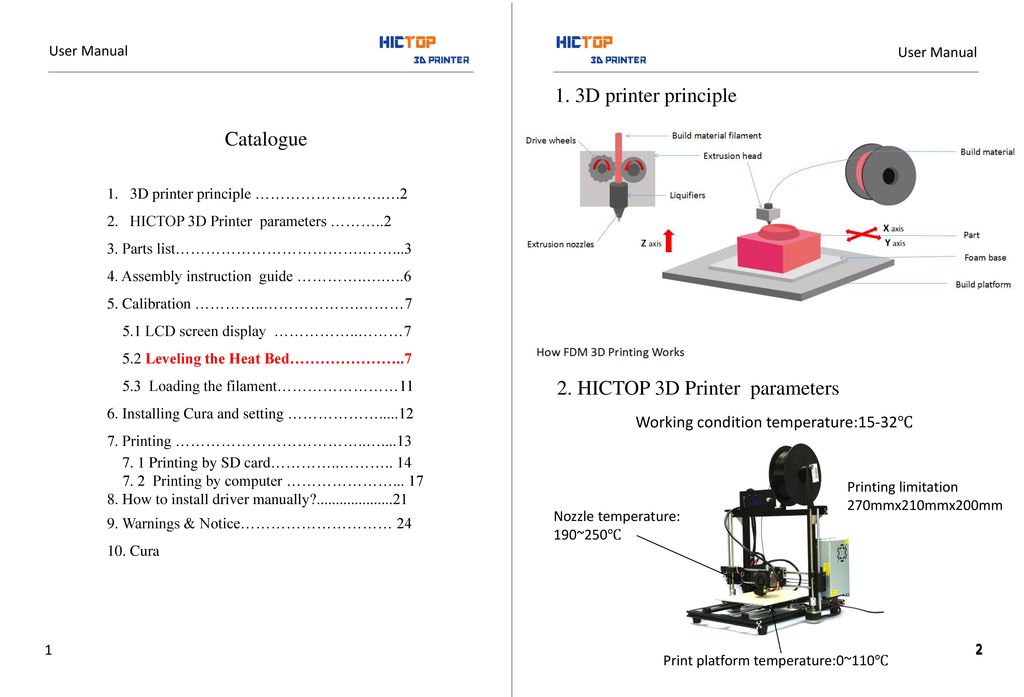 Both are capable of scanning speeds of up to 7.0 m/s. The M400 has a focus diameter of roughly 90 microns, whereas the M400-4’s is slightly higher, at approximately 100 microns.
Both are capable of scanning speeds of up to 7.0 m/s. The M400 has a focus diameter of roughly 90 microns, whereas the M400-4’s is slightly higher, at approximately 100 microns.
EOS provides an entire catalog of materials for use with its devices. These include nickel alloys for high-temperature applications, a pure tungsten alloy for use in imaging devices such as those used in the medical field, copper for heat exchangers, precious metals, and other high-performance alloys used across many industries.
EOS also offers a suite of software applications for you to create and adjust build parameters for CAD data, monitor production, and provide a dashboard to monitor an entire machine park and send notifications about print jobs and the status of the printers.
This includes EOSPrint 2, an application that is designed to help you optimize factors relating to your print jobs – things such as the build speed, surface quality, and parameters to ensure your prints go smoothly.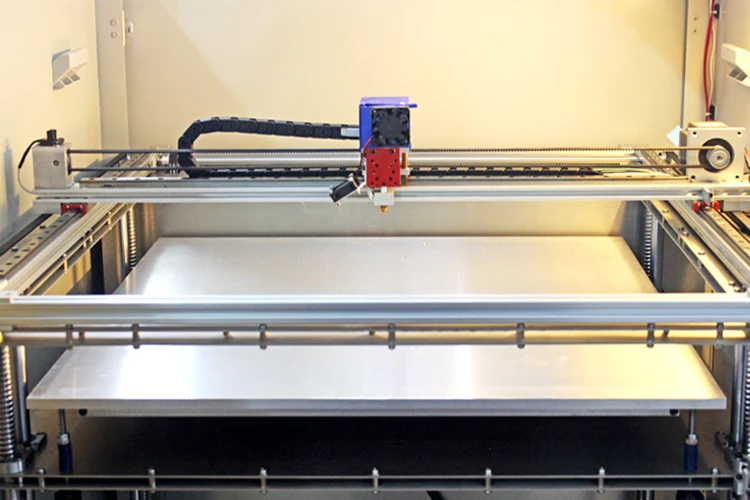
EOS also has additional specialized solutions like EOState Monitoring, for quality control, EOSConnect Core, for IoT-capable connectivity, and EOSConnect MachinePark, with which you can monitor your entire EOS network of printers.
DMP Factory 500
3D Systems’ Direct Metal Printing solutions consists of five modules that perform simultaneous tasks to cut wait times and increase efficiency.
Touted as their game-changer for the AM world, 3D Systems’ Direct Metal Printing (DMP) Factory 500 is another interesting proposition when it comes to metal 3D printers. It is modular, and designed to enable companies to choose a setup that is suited to their requirements.
This modularity makes it possible to have several processes operate at the same time, as opposed to a non-modular system, where you have to wait for one print job to be completed before starting another. So printing, depowdering, recycling material, and preparing a new build can all take place simultaneously, considerably cutting wait times and associated costs, and increasing efficiency.
The system consists of five modules that each perform specific tasks:
There is a Printer Module (PTM), a Powder Management Module (PMM) that depowders parts and recycles unused powder, a Removable Print Module (RPM) that seals the build platform and powder from the atmosphere and can be moved between the Printer and Powder Management Modules, a Transport Module (TRM) for moving the Removable Print Modules between Printer Modules and Powder Management Modules, and a Parking Module (PAM) for temporary storage of Removable Print Modules between stages in the print job.
The Factory 500 has a build volume of up to 500 × 500 × 500 mm, so it is considerably larger than the EOS M400, and also has three 500 Watt lasers.
On the software front, 3D Systems offers 3DXpert, which has tools to support the whole 3D printing process from design to post-processing. The software has all the features you’d expect to come standard when bundled with a device at this price point. You can set up print plates, generate support structures, tweak print parameters, and observe things like thermal stress parameters using the build simulation feature so you can make the required adjustments before the actual printing.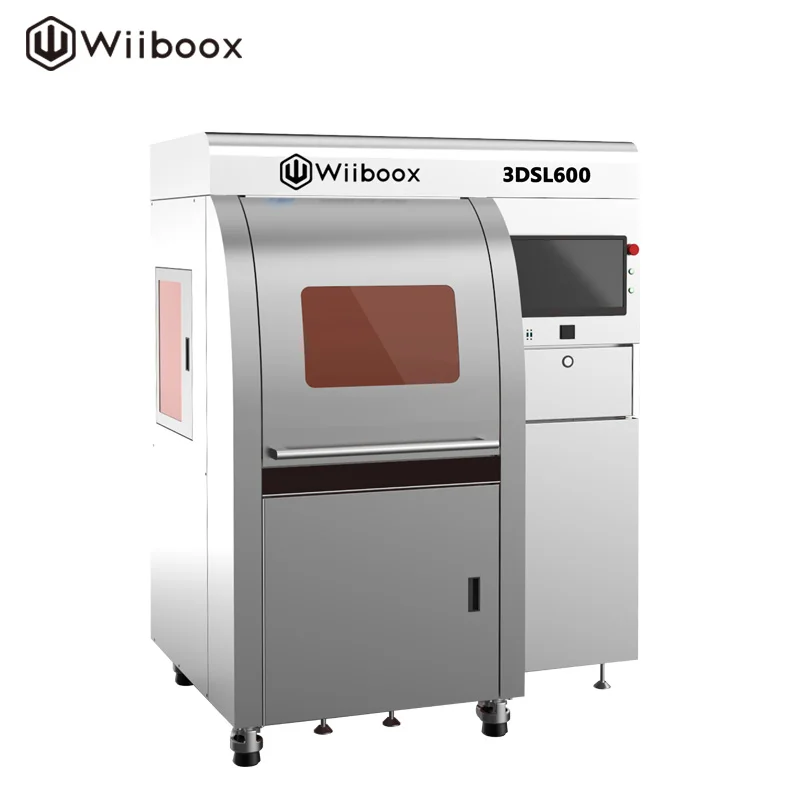
LASERTEC 6600 DED hybrid
DMG Mori’s devices can do both additive and subtractive manufacturing on the same device.
DMG Mori offers a range of hybrid devices that are capable of both additive and subtractive manufacturing. These machines are able to do both welding and milling on one device, enabling both the manufacture and repair of metal parts.
The LASERTEC 6600 DED hybrid is one their leading devices. It is based on what was initially a mill turn center, the NT6600 DCG. DMG Mori fitted it with an Additive Manufacturing (AM) unit, which uses directed energy deposition, a process which employs a laser to fuse metal powder layers.
The LASERTEC 6600 DED hybrid has a build volume of 1,040 × 610 × 3,890 mm, and is great for prototyping, low-volume production of single-molded parts, and parts with complex shapes.
P-50
Desktop Metal also has the P-50, a device that is intended to speed up the process of metal 3D printing, according to Desktop Metal’s estimates, by as much as 100 times compared to some laser powder bed fusion technologies.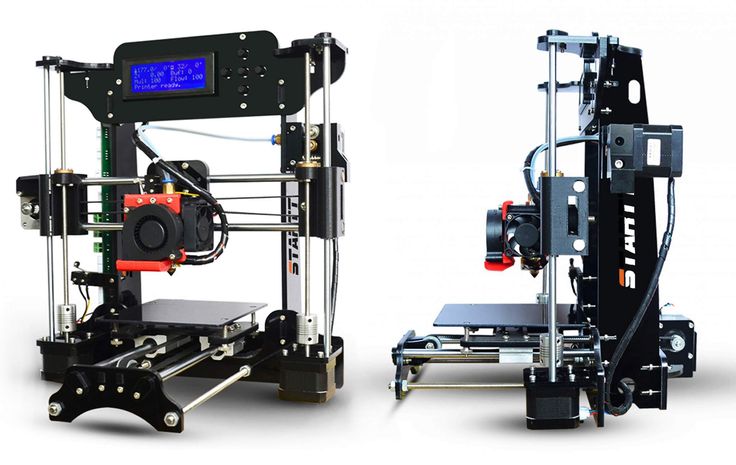 This helps bring down the cost-per-part to levels that can compete with traditional production techniques.
This helps bring down the cost-per-part to levels that can compete with traditional production techniques.
The P-50 uses a technology called Single Pass Jetting. It has a build volume of 490 × 380 × 260 mm, supports bi-directional printing, and has a 1,200 dpi print bar.
Key point
Two of the biggest names in additive manufacturing, 3D Systems and EOS, have impressive options if you’re looking for a SLM metal printer. However, other technologies like laser cladding and Single Pass Jetting are compelling propositions depending on your use case.
Selective Laser Sintering (SLS) printers
EOS P810
The P810 produces flame- and UV-resistant parts. It is specifically targeted at the aerospace sector.
The P810 is a dual-laser SLS printer that EOS designed in cooperation with Boeing. This printer is designed to work only with a material called HT-23, making it a very targeted solution aimed at satisfying industry demands for high-performance parts in the aerospace sector, although it may find uses in other industries as well.
HT-23 is a material that is 23% carbon fiber, is flame- and UV-resistant, and meets the FAR 25.853 and EN 45545 standards of the aerospace and mobility industries respectively. This means that the P810 can produce lightweight, high-strength prints that can withstand high temperatures. These could be used as alternatives to carbon fiber laminated parts, and can also replace aluminum parts.
The P810 boasts a build volume of 700 × 380 × 380 mm, uses two 70-watt lasers, has a refresh rate of 40% for its material, and has a build rate of 2.7 l/h with a packing density of 5 percent – factors that help reduce production time and the cost per part.
HT1001P
Farsoon’s HT1001P has a modular design featuring loading, build, cooling, and breakout stations to support continuous production and minimize downtime.
The HT1001P is a polymer laser sintering system developed by Farsoon Technologies. Farsoon calls it a CAMS system – Continuous Additive Manufacturing Solution. It has a modular design that comprises loading, build, cooling, and breakout stations. The HT1001P was designed to support continuous production in cycles with minimal downtime between builds, and to be a solution that is easy to automate and can easily integrate with existing production setups.
It has a modular design that comprises loading, build, cooling, and breakout stations. The HT1001P was designed to support continuous production in cycles with minimal downtime between builds, and to be a solution that is easy to automate and can easily integrate with existing production setups.
The HT1001P has a build volume of 1,000 × 500 × 450 mm, a dual system of 100-watt lasers that can support a scanning speed of up to 15.2 m/s, and a closed-loop powder handling system that automatically returns unused powder to the supply.
The system is supported by the company’s proprietary BuildStar and MakeStar software which, they are keen to point out, offers several features including open machine key parameters, real-time build parameter modification, three-dimensional visualization, and diagnostic functions.
Stereolithography (SLA) printers
ProX 950
ProX 950 is a large-format SLA printer that is great for producing large objects with very good surface finishes in one go.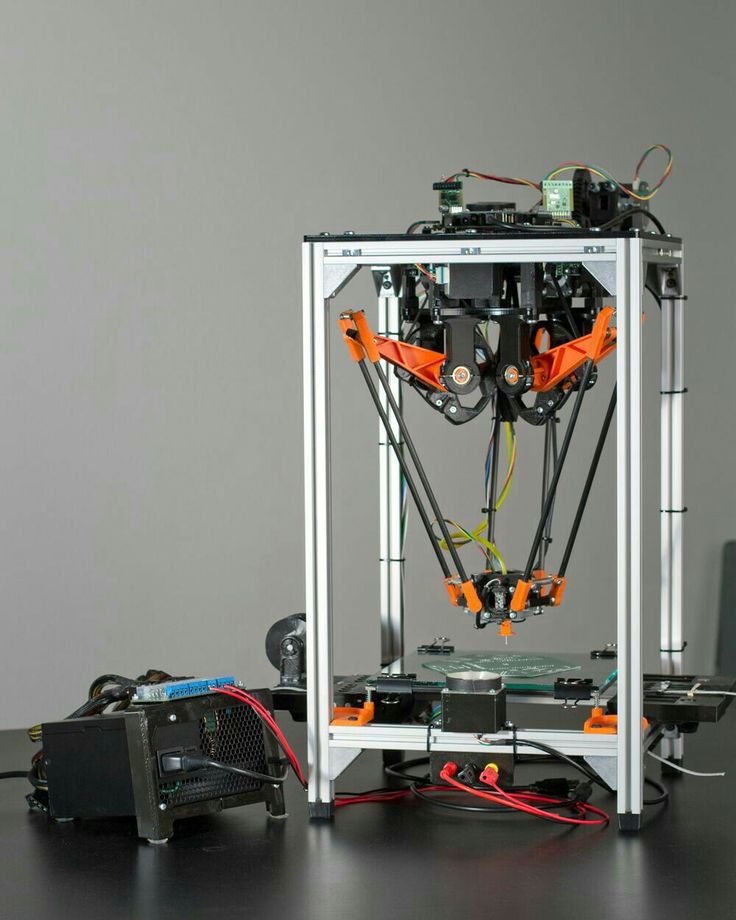
SLA printers are renowned for the quality of the surface finish they produce. They are also highly accurate and can typically work with a wide range of plastic materials. Another plus is that they are capable of large build volumes. Having pioneered the technology, it stands to reason that 3D Systems would have a device that best demonstrates these qualities.
The ProX 950 is a large-format SLA printer with a very impressive 1,500 × 750 × 550 mm build volume. This means that it is able to print, for example, the dashboard of a car in one go. The printer works with various resins that produce different mechanical properties.
On the software side, the proprietary 3D Sprint software package is meant to provide support for the whole process starting from the CAD data to the final 3D print. It features options for preparing CAD and polygon data, and also for managing the 3D printing process not just for SLA printers, but also for 3D Systems printers using other technologies – CJP, DLP, MJP, and SLS.
Digital Light Processing printers
Figure 4 printers
Essentially an array of smaller DLP standalone printers, Figure 4 Production is designed to deliver small parts in large volumes.
3D Systems’ Figure 4 Production is an industrial DLP printer designed to maximize manufacturing throughput. DLP is a similar technology to SLA. The difference being that it uses a projector to cure an entire layer of resin, instead of a single light beam.
According to their website, Figure 4 Production is capable of producing over one million parts per year using a wide range of industrial, dental, and custom materials. It has a printable build volume of 124.8 × 70.2 × 346 mm, so it’s essentially an array of smaller DLP standalone printers.
Figure 4 Production is a great choice if you want to scale up production of smaller parts. It is not a large format 3D printer like, say, the ProX 950. As the manufacturer puts it, the platform works well for fast product iteration, mass-customization, bridge manufacturing, and low-volume production.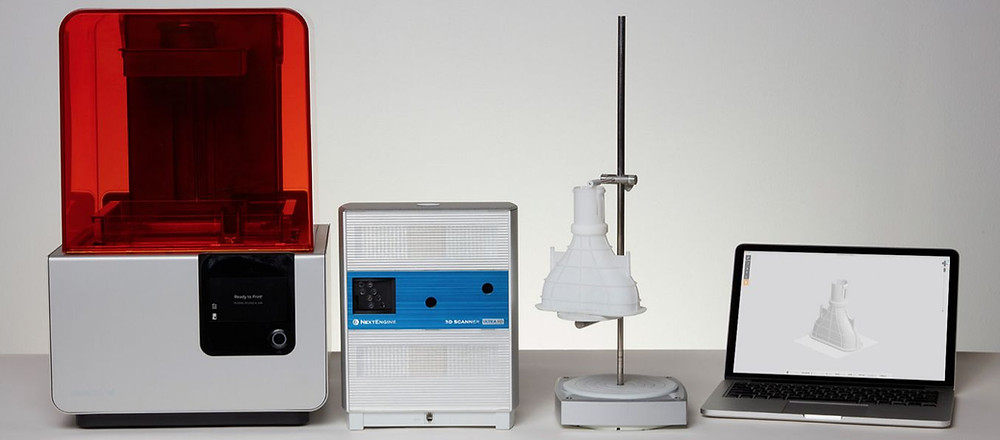
Like the ProX 950, Figure 4 Production uses the company’s proprietary 3D Sprint software for file preparation and production, with possible cloud integration capabilities using 3D Connect.
Continuous Liquid Interface Production (CLIP)
Another resin-based technology worth looking at is Continuous Liquid Interface Production (CLIP). Digital Light Synthesis, a technology that is proprietary to Carbon, is based on this approach. The process uses digital light projection and oxygen-permeable optics to quickly produce durable parts with the mechanical properties, resolution, and surface finish that are typical of resin-printing.
Carbon’s L1 is a large-format 3D printer with a build volume of 400 × 250 × 460 mm. Carbon has a range of materials that offer different properties from high elasticity, to biocompatibility, heat resistance, and high strength. This versatility, coupled with its capacity for high-volume production, has made it an appealing choice for global brands like Adidas.
Key point
Having pioneered SLA printing, 3D Systems is predictably a dominant name when it comes to 3D printers using variants of the resin-based technology like DLP. For high-volume production of durable, end-use parts, Carbon’s ground-breaking L1 3D printer is also worth a look.
MultiJet (MJP) printers
ProJet MJP 2500 series
ProJet MJP 2500 series printers (MJP 2500W, 2500, and 2500 Plus) work with different materials to print wax patterns, engineering and rigid plastics.
3D Systems’ dominance in the additive manufacturing industry is again apparent in another category of 3D scanner. MultiJet Printing is an inkjet printing process that uses printheads to deposit a range of printing materials like resins or casting wax on a build platform. Each layer is cured by a UV lamp mounted on the printhead that moves across the platform and selectively cures the material.
The ProJet MJP 2500 series printers (MJP 2500W, 2500, and 2500 Plus) work with different materials to print wax patterns, engineering and rigid plastics.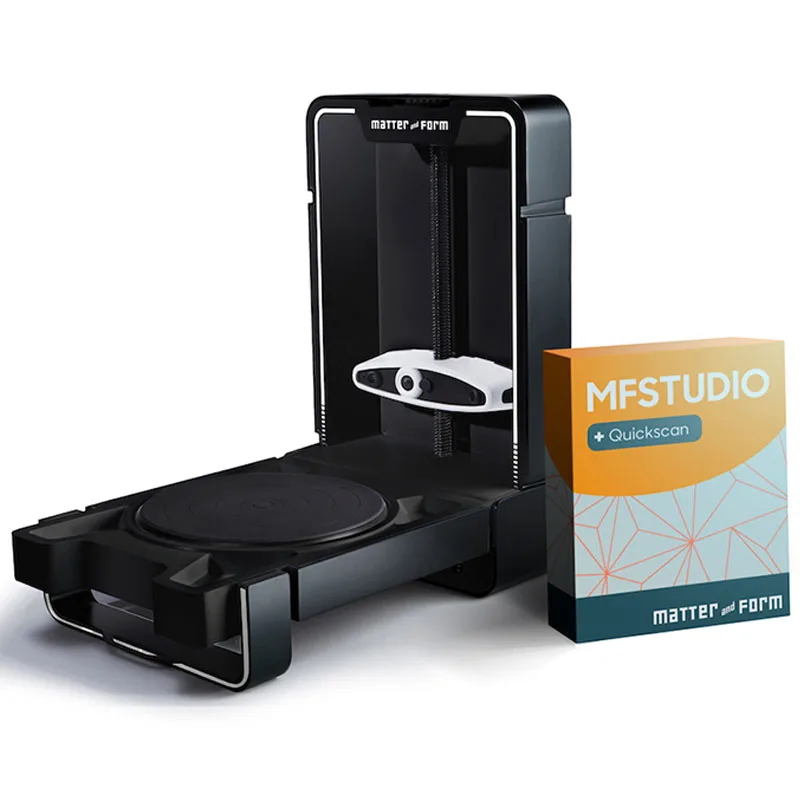 The printers have a build volume of 294 × 211 × 144 mm, and so would work well for jewelry and dental applications.
The printers have a build volume of 294 × 211 × 144 mm, and so would work well for jewelry and dental applications.
Like some of the other 3D Systems products, these printers use the company’s proprietary 3D Sprint software for file preparation and production, and 3D Connect for cloud integration.
Color printers
J55 Prime
The J55 Prime can create over 640,000 unique combinations, including Pantone Validated colors.
Stratasys features in our final category for industrial 3D printers – color printers. These printers do not typically produce sufficient part strength for engineering applications, so they are more commonly used for education, toys, and color prototypes. All the same, their ability to produce prints using full color, rigid or transparent materials, elastic flexible surfaces, or Digital ABS, make them an interesting prospect for functional prototyping.
The J55 Prime has a build volume of 140 × 200 × 187 mm. It is equipped with five material channels with a fixed printhead with a rotating build platform. According to Stratasys, it can create over 640,000 unique combinations, including Pantone Validated colors, in a quiet, odorless process.
According to Stratasys, it can create over 640,000 unique combinations, including Pantone Validated colors, in a quiet, odorless process.
For software, Stratasys has GrabCAD Print. The software has features that help you throughout the printing process from CAD design or render, to 3D printing. GrabCAD Print supports common file formats, like 3MF, OBJ, STP, and many others. Formats you can export to include STEP (.stp), IGES (.igs), STL (.stl), ACIS (.sat), JT (.jt), and VRML (.wrl) files.
ProJet CJP X60 series
ProJet 860Pro is a full CMYK 3D printer with multiple printheads that can print an assortment of colors and gradients.
3D Systems’ X60 series offers a range of color 3D printers that are capable of high-quality prints in an impressive range of colors. The printers are great for organizations of different sizes in various industries. Educational institutions, architectural firms, consumer goods manufacturers, and media and entertainment companies can all use these devices to, for example, create educational models, or build prototypes that illustrate design intent, or show clients the finished look of a part.
The ProJet 860Pro is a full CMYK 3D printer with a build volume of 508 × 381 × 229 mm. It has multiple printheads, can print an impressive range of colors, including gradients, and can nest parts horizontally and vertically.
3D Scanning Service – 3DChimera
We love 3D Scanning.
In fact, our 3D scanning services are our most popular service offering! We have 3D scanned just about everything imaginable ranging from aerospace components to celebrities visiting Miami. If you need 3D scanning service here in Miami, FL or anywhere across the USA, we are here to help.
All 3D scanning projects are composed of two aspects:- Scan Data Acquisition
- Scan Data Clean-up & Optimization
Each area is quoted with an hourly estimate of the time required to complete the desired tasks. We understand that each 3D scanning project is unique and requires a custom quote to deliver the best possible results.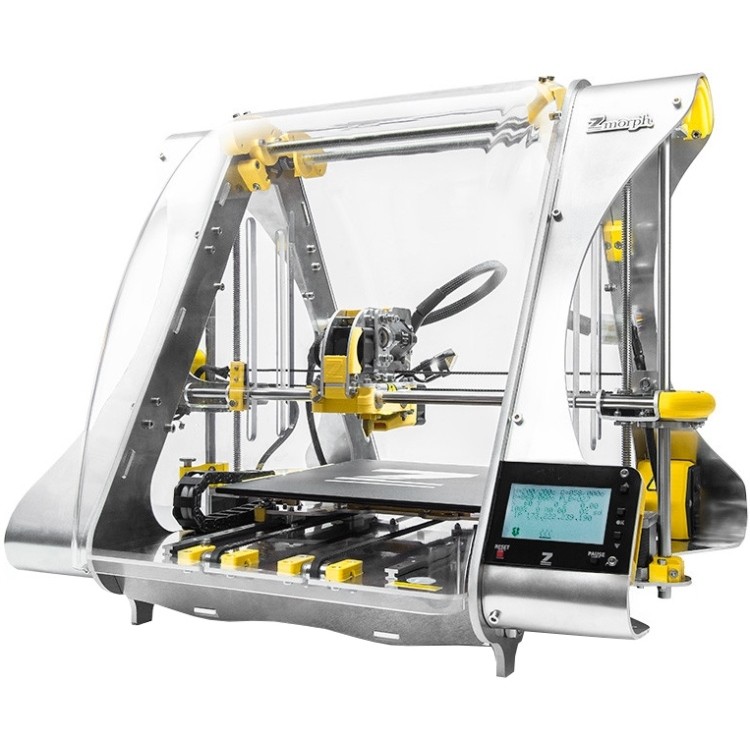
Frequently Asked Questions:
- Where do you 3D scan?
- We work with customers from locations all over the world! Most of our scans take place right in our Miami, FL based office. The easiest way to work with us is to simply send your object to our location via FedEx.
- My object is too big to send, can you come to my location to scan?
- We are happy to scan on-site at a customer location. We can respond very quickly to a request for 3D scanning anywhere in the state of Florida. We also work with customers across the USA, as it is easy for us to travel due our our proximity to the Miami International Airport.
- What is the largest object you can 3D scan?
- We have a wide range of scanners available for objects of all sizes. Most of the things we scan fit on a table top, but we have also scanned small aircraft and even the side of a 737 aircraft!
- What is the smallest object you scan 3D scan?
- The smallest thing we have scanned to date is a match stick.
 With our highest resolution scanners we can even see a finger print in 3D!
With our highest resolution scanners we can even see a finger print in 3D! - Can you scan reflective objects, like chrome or glossy paint?
- It depends. Since all of our 3D scanners use optical cameras, it can be challenging to capture data of highly reflective objects without a lot of "noise" in the scan data. We can overcome this by preparing the surface with a powder that dulls the reflection. This powder can be easily removed with soapy water.
- Can you scan precision parts for engineering applications?
- Yes, absolutely! In fact, this is our specialty as most of our staff come from an engineering background. We know all of the tricks to get 3D scan data to play nicely with traditional CAD system like SOLIDWORKS, CREO and Autodesk Inventor.
- Do you work with artists?
- We love working with artists for 3D scanning projects. We often work with artists to create a digital copy of their work prior to delivery to a customer site.
 We are also skilled in 3D scanning small objects that need to be scaled up for large sculptures.
We are also skilled in 3D scanning small objects that need to be scaled up for large sculptures. - Can you 3D scan in color?
- Yes, we have the ability to scan objects in full color with some of our scanners. This can be particularly useful for 3D scans that are intended for digital archival or artwork.
- Can you 3D scan people?
- Yes, we can definitely scan a person. There are multiple scanners that are used to scan people - we use a friendly iPad-based 3D scanner. This 3D scanner is very good a capturing hair, which is usually the most difficult part of 3D scanning people. This scanner also captures color data. The color texture makes the data look very real, but the 3D data is lower resolution (+/- 5mm) than our industrial 3D scanners. A full body scan starts at $500.
- More questions? Find your answers here.
- Can you 3D scan a face?
- Yes, we have multiple scanners capable of capturing a human face.
 We can capture high resolution data without a color map (+/- 0.5mm), or lower resolution data with a color map (+/- 5mm). A face scan starts at $250.
We can capture high resolution data without a color map (+/- 0.5mm), or lower resolution data with a color map (+/- 5mm). A face scan starts at $250. - More questions? Find your answers here.
- Do you scan buildings?
- We have the ability to easily scan architectural features and even rooms, but we do not have the technology available to scan an entire building. This type of scan requires a LIDAR technology which we do not have in-house.
- Can I open a 3D scan file in SOLIDWORKS?
- Yes, sort of, it depends. Most of our customers work with SOLIDWORKS and we have a few techniques to get you editable data with varying levels of fidelity.
- Please see our deliverables on this page and check out this video for a little more clarity:
3D Scanning Software
| ANSYS Live / SpaceClaim |
| |
| Solidworks |
|
3D Scanning Examples:
| Sculpture 3D Scan Setup & Result for Archival | |
| Airplane 3D Scan Setup and Result for FEA/CFD Analysis | |
| Ultrasound Probe 3D Scan for Customized Tool Design | |
| Tortoise 3D Scan for National Geographic to Reverse Engineer and Design a new Prosthetic Shell Cover. Read all about it! |
Deliverables
Our customers often ask what the deliverables look like from a 3D scanning project. Here are some possible options, with increasing complexity:
| Raw Scan Data (STL, 19.5MB) | |
| Cleaned Up Scan Data (STL, 18.6MB) | |
| Patch Network Surface (STEP, 4.8MB) | |
| Fully Reverse Engineered Part (STEP or Native CAD, 377kb) |
Age verification
By clicking enter you are verifying that you are old enough to consume alcohol.
Enter
3D scanners - optical and laser 3D scanners
- home
- 3D scanners
Devices for 3D scanning of objects are designed for digitizing 3D physical objects, building a mathematical model of an object, as well as for solving problems of reverse engineering and quality control of production. As a result of scanning, you get a 3D model, which can later be worked with in any specialized 3D modeling programs or reproduced on a CNC machine and a 3D printer.
As a result of scanning, you get a 3D model, which can later be worked with in any specialized 3D modeling programs or reproduced on a CNC machine and a 3D printer.
3D scanners have a number of specific features that conventional 2D scanners do not have. Depending on the model, 3D scanners can be used both in the office/office and in the field. Three-dimensional scanners are capable of carrying out three-dimensional digitization of both small and large physical objects, several meters in size.
This section contains information about 3D scanners with some of the best indicators of price, accuracy, quality and performance, which are successfully used in mechanical engineering, instrument making, medicine, architecture, and other industries.
Product filtering
-
3D scanner Artec Space Spider
Scanner Type: Portable
3D Light: Blue LED
3D accuracy, up to: 0.05 mmPrice: 2 271 600 ₽
In stock
3D scanner Artec Space Spider
-
3D Scanner Calibry
Scanner Type: Portable
3D illumination: LED, white
3D accuracy: up to 0. 1 mm
1 mm Price: 469000 ₽
Available
3D Scanner Calibry
-
3D scanner Calibry mini
Scanner Type: Portable
3D illumination: LED, blue
3D accuracy: up to 0.07mmPrice: 545 000 ₽
In stock
3D scanner Calibry mini
-
3D scanner RangeVision PRO
Scan Technology: Structured Illumination
Accuracy: up to 18 µmPrice: 1 490 000 ₽
Available
RangeVision PRO 3D Scanner
-
3D Scanner RangeVision Spectrum
Scan Technology: Structured Illumination
Accuracy: up to 40 µmPrice: 390 000 ₽
In stock
RangeVision Spectrum 3D Scanner
-
3D scanner RangeVision NEO
Scan technology: structured illumination
Accuracy, up to: 0. 05mm
05mm Price: 195 000 ₽
On request
RangeVision NEO
3D scanner -
3D scanner Artec Leo
Scanner Type: Portable
3D Illumination: VCSEL
3D accuracy, up to: 0.1 mmPrice on request
On request
3D scanner Artec Leo
-
3D scanner Artec EVA
Scanner Type: Portable
3D Light: Flash
3D accuracy, up to: 0.1mmPrice: 1 623 600 ₽
In stock
3D scanner Artec EVA
-
3D scanner Artec Ray
Scanner Type: Laser
Angular accuracy: 25 arc seconds
Color: Dual 5MP fully integrated camerasPrice on request
On request
3D scanner Artec Ray
-
3D scanner Artec Micro
Scanner Type: Desktop
3D Light: Blue LED
3D accuracy, up to: 0. 01 mm
01 mm Price on request
On request
3D scanner Artec Micro
XJRP SPS350H industrial 3D printer (SLA) - 3D printing equipment supply from Foliplast company with the best service
Laser stereolithography was one of the first types of rapid prototyping technologies. The abbreviation SLA refers to the actual equipment, but now it is commonly used in the meaning of technology.
Laser stereolithography is based on the action of a laser beam on a liquid photopolymer resin. Under the action of radiation, the resin hardens-polymerizes at the point of contact. The beam runs around the contours of the future product, after which a new thin layer of photopolymer is poured and the process is repeated again. Thus, the product is literally built up layer by layer.
Stereolithography allows you to create products of any complexity. Electronic control of the laser beam is performed according to the data of the presented mathematical model. Therefore, to grow a prototype, no additional equipment is required.
Laser stereolithography (SLA) ensures high precision. The base material is easy to process and, if necessary, the created surfaces can be brought to a mirror finish. Compared to other technologies, stereolithography makes it possible to obtain a high strength of the finished sample.
How it works:
Layer-by-layer growth for the rapid production of prototypes (physical samples) of any complexity and shape directly from a three-dimensional mathematical model (CAD data) without the need for any tooling, machining.
Main tasks of the received products :
- Evaluation of construction, design and ergonomics;
- Functionality assessment;
- Collection analysis;
- Master models for the manufacture of silicone equipment.
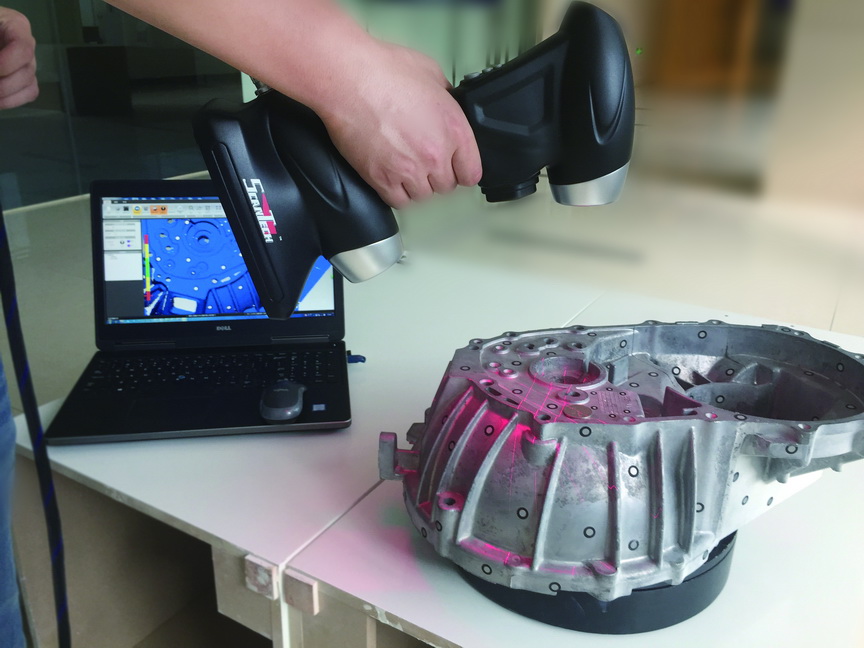
Laser stereolithography has the following advantages:
- Ability to manufacture prototypes of any complexity, including thin-walled, undercut, etc.;
- High construction accuracy and excellent surface quality;
- Ease of processing prototypes and manufacturing tooling;
- The possibility of independent use of resins with different characteristics;
- Wasteless production.
You can buy the XJRP SPS350H 3D printer at the representative offices of our company in Moscow, St. Petersburg, Nizhny Novgorod and other cities of Russia, or order it on our website by calling 8 (800) 302-13-41. Placing an order for new or used XJRP 3D printers is also possible online, for this you need to leave a request in the product card or contact form. After filling out, the manager will contact you to clarify the order, provide up-to-date information about prices, discounts and payment methods.
Learn more


